What Camera Is The Best For Beginners?
The best camera for beginners in 2022

The all-time photographic camera for beginners is the ideal mode to get serious about your photography or video shooting. A dedicated camera offers lots of advantage over a smartphone, from physical things like ergonomics and a bigger bombardment, to the quality and resolution of the image itself.
Cameras are able to field larger sensors and more sophisticated lens systems than smaller devices like smartphones, giving the user much more than shooting versatility in terms of what they can capture. Desire a powerful optical zoom lens for distant, or a large lens aperture to brand the almost of low light? A proficient camera organisation is your best bet. Side annotation: if yous demand a primer in the technical terminology, whorl to the bottom of this folio, where nosotros've put together a jargon-busting explainer for everything you lot need to know when picking a camera for beginners.
There are three main types of camera y'all'll be picking betwixt: DSLRs, mirrorless cameras and compact cameras. Each has different advantages and compromises, and then information technology's all well-nigh balancing your needs and budget – again, whorl to the bottom if yous need a quick explainer.
Cameras can too be quite specialised – for instance, cameras optimized for shooting in night conditions are and then common that we take a dedicated guide to the best low-light cameras. Plus, there are also excellent all-in-one models for those who want something slim and simple, which we've rounded up in our guide to the best point-and-shoot cameras. In this guide, nevertheless, we've gone full general, and just included the all-time models for starting time-fourth dimension shooters.
Want more than pick? We too have a broader best cameras guide, and a handy guide to the best cameras for kids if you're buying for a little one. Also, once you've started shooting, make certain you cheque out the best photo editing software.
The best camera for beginners available at present
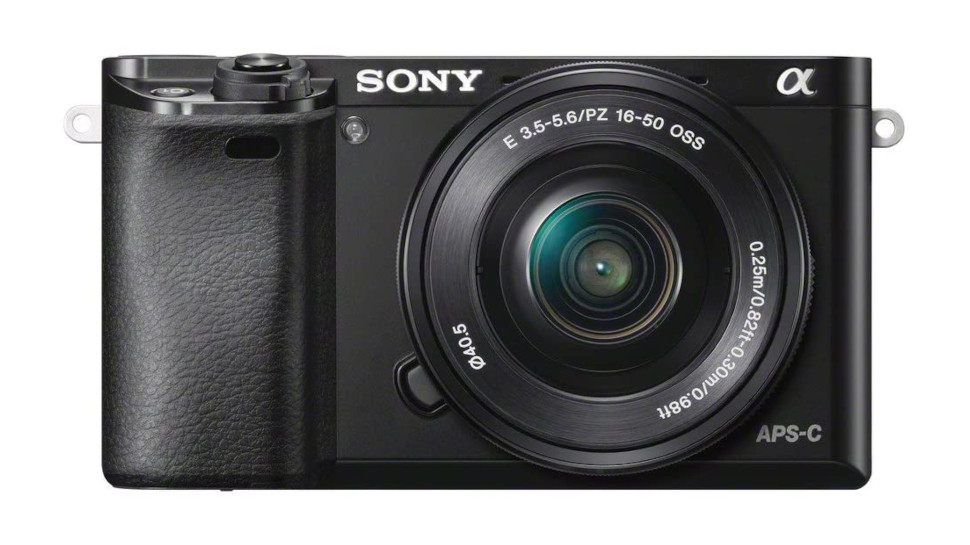
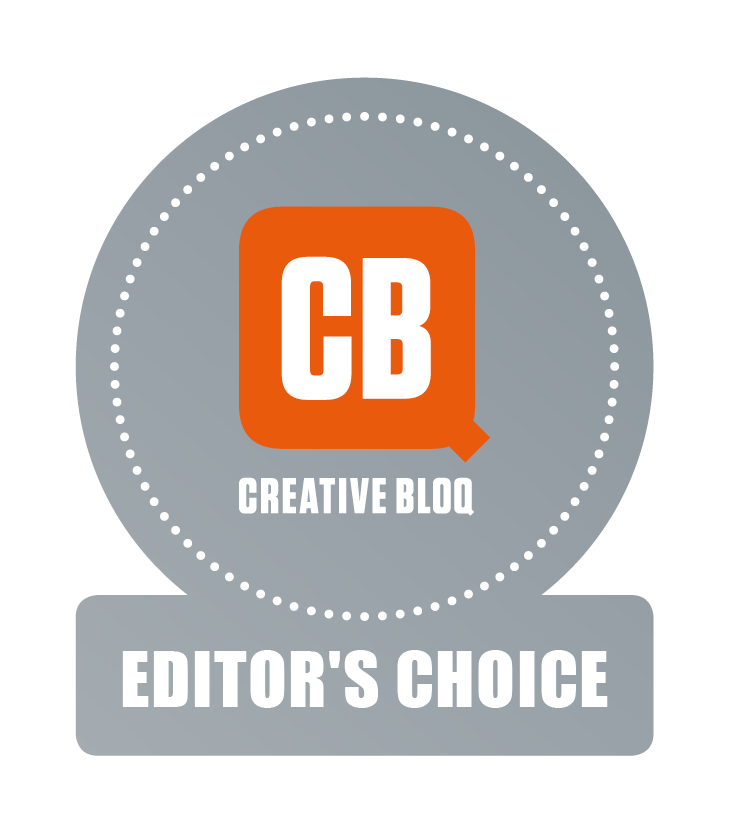
The Sony A6000 has been around for years, and is yet one of the best cameras that beginners tin can buy – proof that you don't always demand to rush for the latest tech. Most cameras get discontinued afterwards a few years as new models supercede them, but Sony has kept the A6000 in circulation since its release in 2014. And the best part is – as the years have gone past, information technology'south just got more affordable.
The camera still has all the features a gimmicky photographer is likely to need. Its APS-C sensor represents a significant upgrade over a smartphone and will provide noticeably improved prototype quality. The 24.3MP of resolution is more enough for about purposes – enough to crop in a little, or to make decent prints of your images.
When we reviewed the Sony A6000, we found that fifty-fifty all these years downwardly the line, it still holds up for photographers, with all the features y'all could want except for maybe touchscreen focus point selection. For video users though, information technology hasn't quite retained its crown and then well; it predates the real 4K boom, so video resolution tops out at Full Hard disk (fine for most purposes, but maybe not for forward-thinking video creators). Plus, it lacks a 3.5mm mic jack, so you don't have an option for improving your sound. Otherwise, this is a fantastic photographic camera for beginners, and ofttimes piece of cake to find at a dandy price.
Our Sony A6000 review goes into more detail.
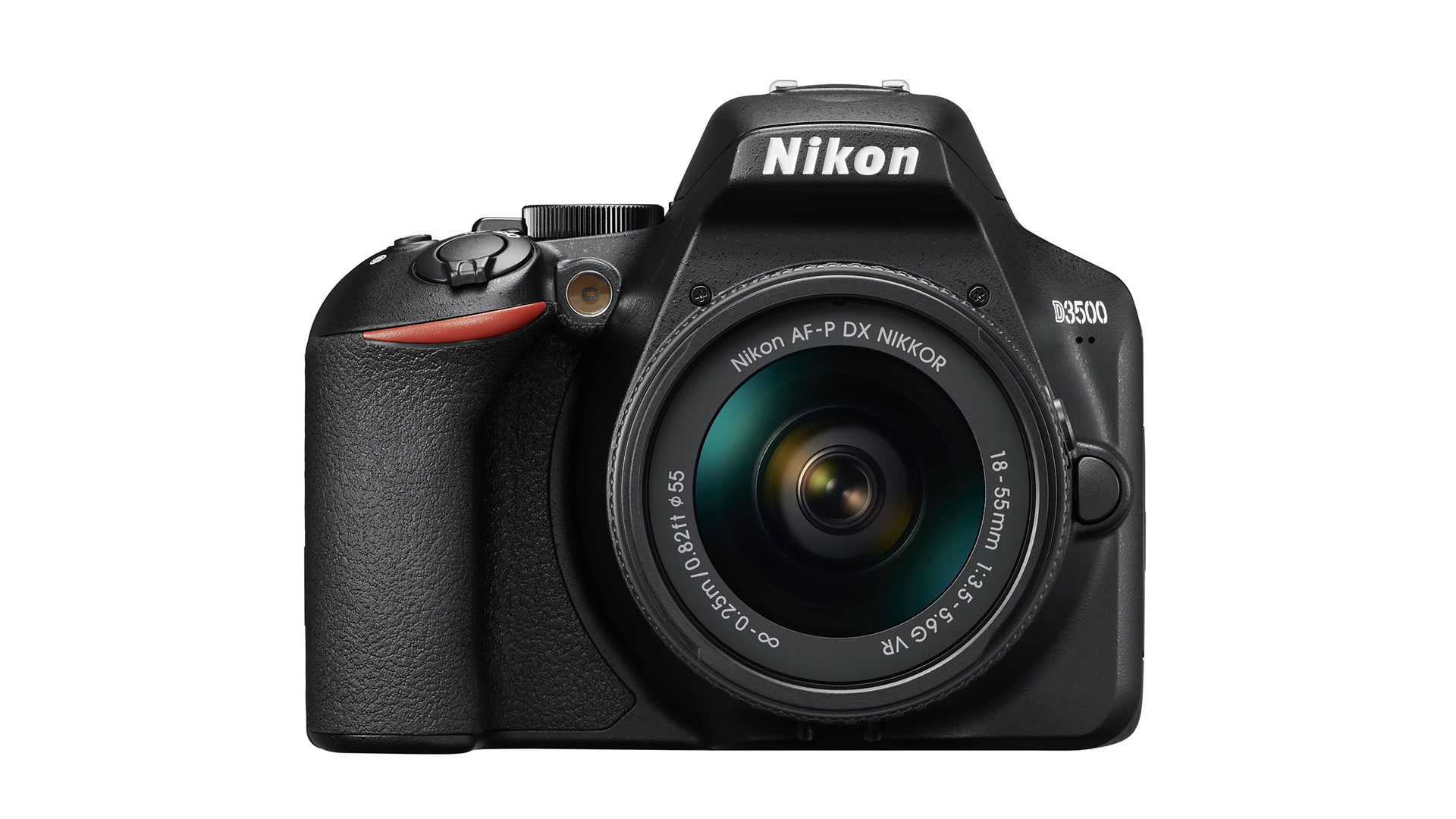

The Nikon D3500 is a DSLR, meaning information technology has a mirror mechanism that allows it to field an optical viewfinder. This makes it physically larger than mirrorless cameras like the Sony A6000, but many photographers prefer the slightly chunkier, ergonomic class factor of the DSLR. They may not be the near fashionable cameras on the block, but at that place's withal a place for them and will be for a long time.
When reviewing the Nikon D3500, we appreciated this satisfying DSLR handling – there's no question that it'due south an enjoyable camera to use. One affair we'd say is that while the arranged kit lens does the job, y'all volition probably want to make upgrading it a priority. Picking up a lens with a larger maximum discontinuity gives you much more flexibility when it comes to exposure and depth of field, expanding your shooting options.
Especially optimised for beginners, the Nikon D3500 is packed with useful tutorials and guide modes to aid new users understand the basics of exposure and settings. The D3000 series of cameras are some of the most pop cameras for students around, and this is a big part of the reason why. Of course, it likewise helps that you've got Nikon'southward F-mount, giving you admission to a huge catalogue of fantastic lenses.
The D3500 has an APS-C sensor, and 24.2MP of resolution – basically identical to the A6000, and a skilful combination for most purposes. As well, while DSLRs may not be as fashionable as they once were, being in the Nikon F organization withal gives you a huge pick of fantastic cameras when it comes time to upgrade, all the style up to pro-level workhorses similar the Nikon D850.
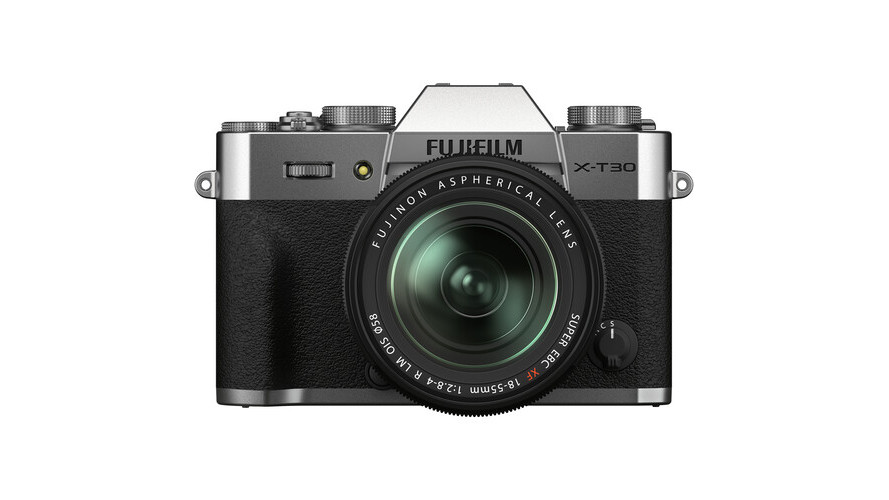

If y'all have a piddling more cash in the bank and want a premium beginner's photographic camera, we'd strongly recommend taking a look at the Fujifilm X-T30 2. A relatively contempo refresh of a pop camera, the Ten-T30 II is a joy to utilize, with satisfying punch-based controls and a cool retro build, both of which hearken back to the movie SLRs of the late 20th century.
The X-T30 II is a especially adept photographic camera for those who don't want to spend a lot of time editing images in software similar Photoshop or Lightroom. When we reviewed the X-T30, nosotros really appreciated how skillful its JPEGs were straight out of photographic camera, leaving u.s. free to shoot and shoot in the moment. Also, if you desire a real touch of retro amuse, you can play around with Fujifilm'south fantastic Film Simulations. These are finely tuned shooting presets that specifically emulate the looks of classic picture show stocks like Velvia, Provia and Astia. We found it incredible but how addictive these were.
The other half of the picture is the lenses, and Fujifilm passes with flight colors here – the X-mountain lens series may not be as abundantly populated as others, but the lenses themselves are some of the all-time around. Absolutely tack-precipitous, with broad apertures and tactile discontinuity rings – they're a great bargain of fun to utilize.
In use, we were really impressed with the handling and quality of the Ten-T30 Ii. At that place are some features information technology might take been nice to see, like in-body image stabilisation or a full articulating rear screen, but we can capeesh that throwing in everything would likely have seen the camera's price tag screw out of control.
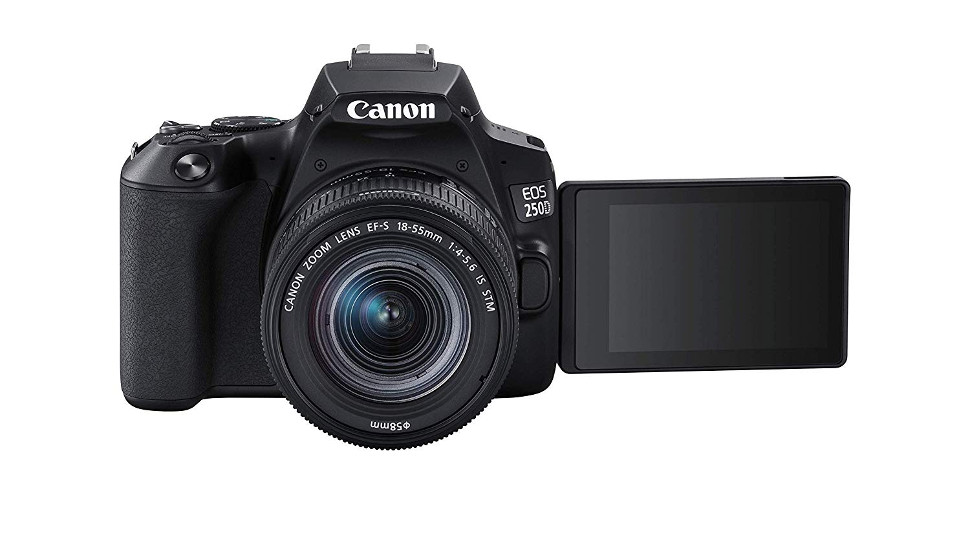
Another DSLR at the entry-level, the EOS 250D is not Catechism's cheapest DSLR, but it's the cheapest ane nosotros think is worth ownership. Information technology's the first entry-level DSLR to come packing 4K video, so while it's a shade pricier than the Nikon D3500, yous do become more than for your money.
When using the EPS 250D, 1 of the starting time things you lot'll likely discover is that the Dual Pixel CMOS autofocus system is splendid: snappy and accurate. We besides appreciated the quality of the 18-55mm kit lens this camera will mostly come bundled with. While it is a kit lens, information technology's a surprisingly decent i, and makes for a solid optic to go used to the ins and outs of photography.
Canon also took a leaf out of Nikon's book and made the EOS 250D extremely attainable for beginners. The Guided User Interface and Creative Assistance modes assist you slide your fashion into understanding how the camera works, and the Quick menu continues to give you easy admission to the most vital settings.
One time you lot've got to grips with the EOS 250D, you've bought your style into one of the well-nigh venerable and pop camera systems around, and even if it has some drawbacks – a slightly bones autofocus organization, for one – information technology's a superb beginner'due south camera. On the expensive side, only worth information technology.
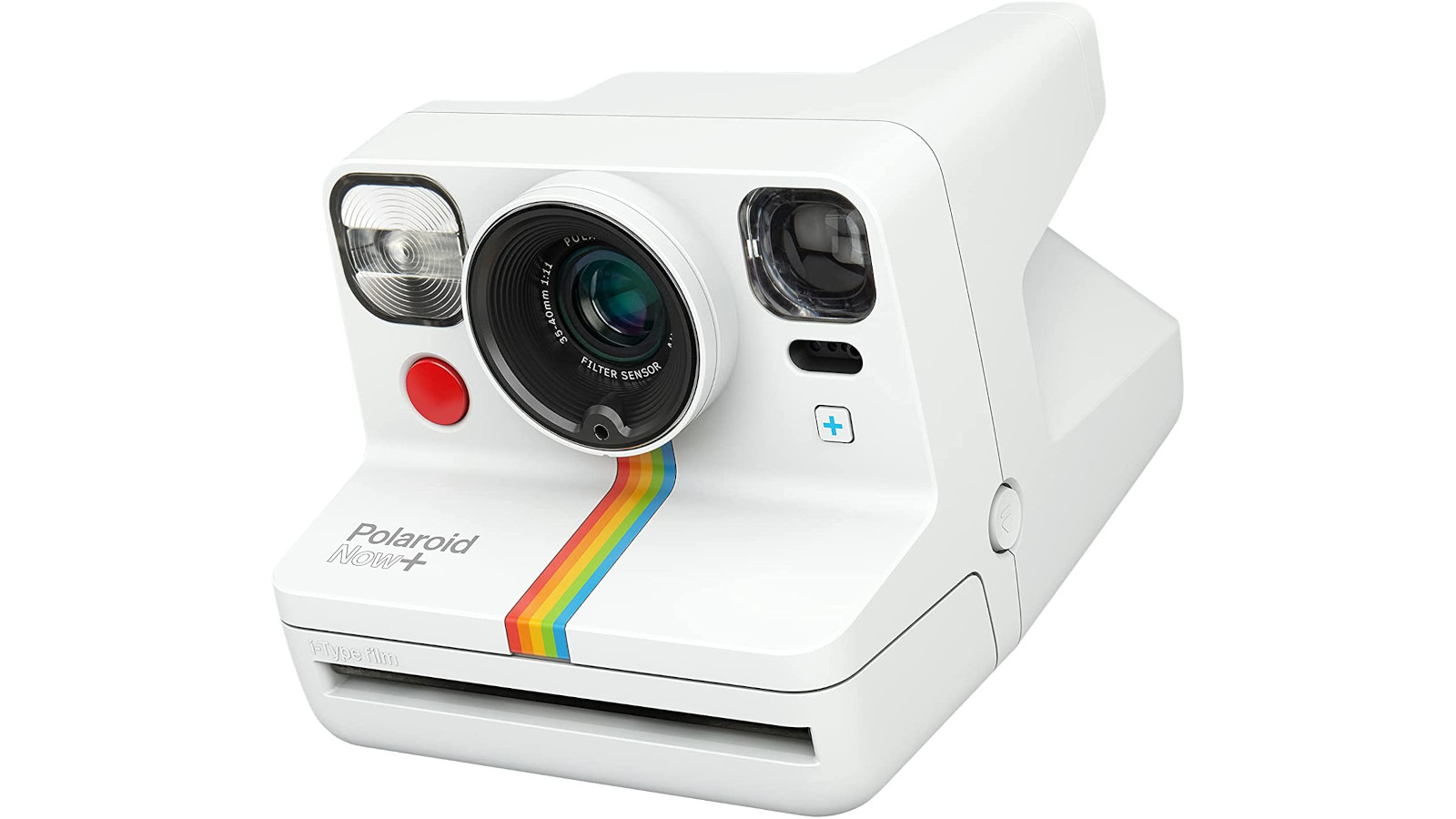
The Polaroid Now+ is the latest affiliate in the ongoing success story that is the regeneration of Polaroid. These revitalised instant cameras combine the best of the old and new; producing instant picture show prints with all the lo-fi amuse you call back from years gone past, while besides offering smartphone connectivity to unlock loads of cutting-edge features.
Polaroid has extensively reworked its app, and the event is a photographic camera-command experience that feels smooth and modern. It lets you play around with specialised shooting modes like Double Exposure, Self Timer, Calorie-free Painting and more, and introduces Aperture Priority mode for the more than confident of settings-tweakers. The Now+ uses a two-lens autofocus organisation, and can be mounted to a tripod if that's something that interests you.
When using the camera, we institute that the prints, naturally, look nifty, with just the correct level of retro chic. They're not going to win awards for technical perfection, but that'south never been the indicate of Polaroid. They simply ooze analog charm, and provide significantly ameliorate paradigm quality than Fujifilm'southward Instax range. Though, granted, this ways that they're more expensive to buy. The merely real downside of the Polaroid Now+ is that you accept to factor in the ongoing costs of film.
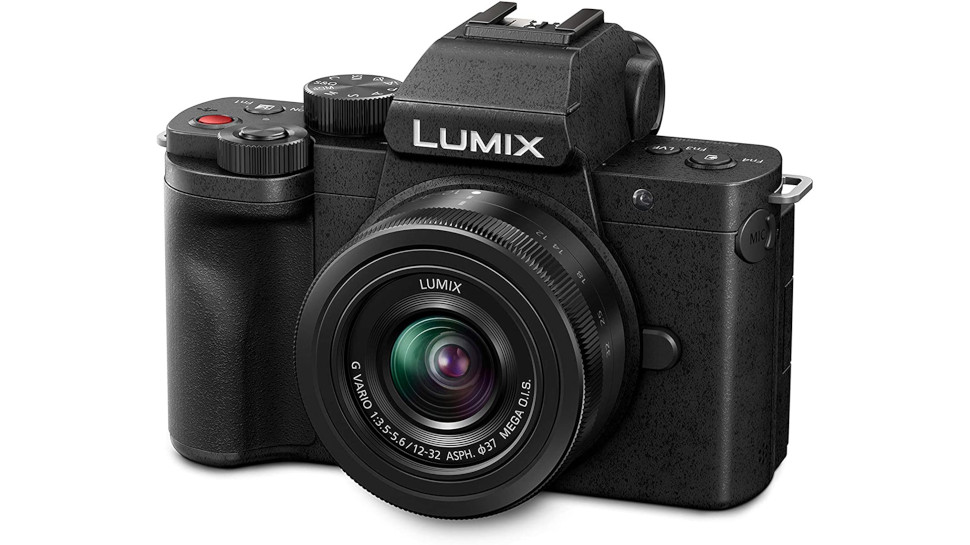
if you lot know you're likely to want to capture stills AND video but are perhaps a bit of a novice at both, the Panasonic Lumix G100 is the place to start. A super-small photographic camera weighing in at just 412g body but, the G100 even so packs in loads of great features. It shoots sublime 4K/30p video and excellent 20MP stills, and thanks to the Micro Four Thirds mount, there are admittedly loads of lenses to choose from.
Nosotros specially capeesh the control layout, which scores major points for how approachable it is (you tap the large red push button to starting time recording, for instance). The customisable Fn buttons are a good way to encourage yourself to experiment with different settings, while the touchscreen is as well flexible and convenient.
Also, in a remarkable development, Panasonic has teamed upwardly with Nokia to requite the camera OZO audio, a multi-mic organization that makes the photographic camera'south on-lath audio recording... actually quite decent. This alone makes it a great starter camera for vlogging.
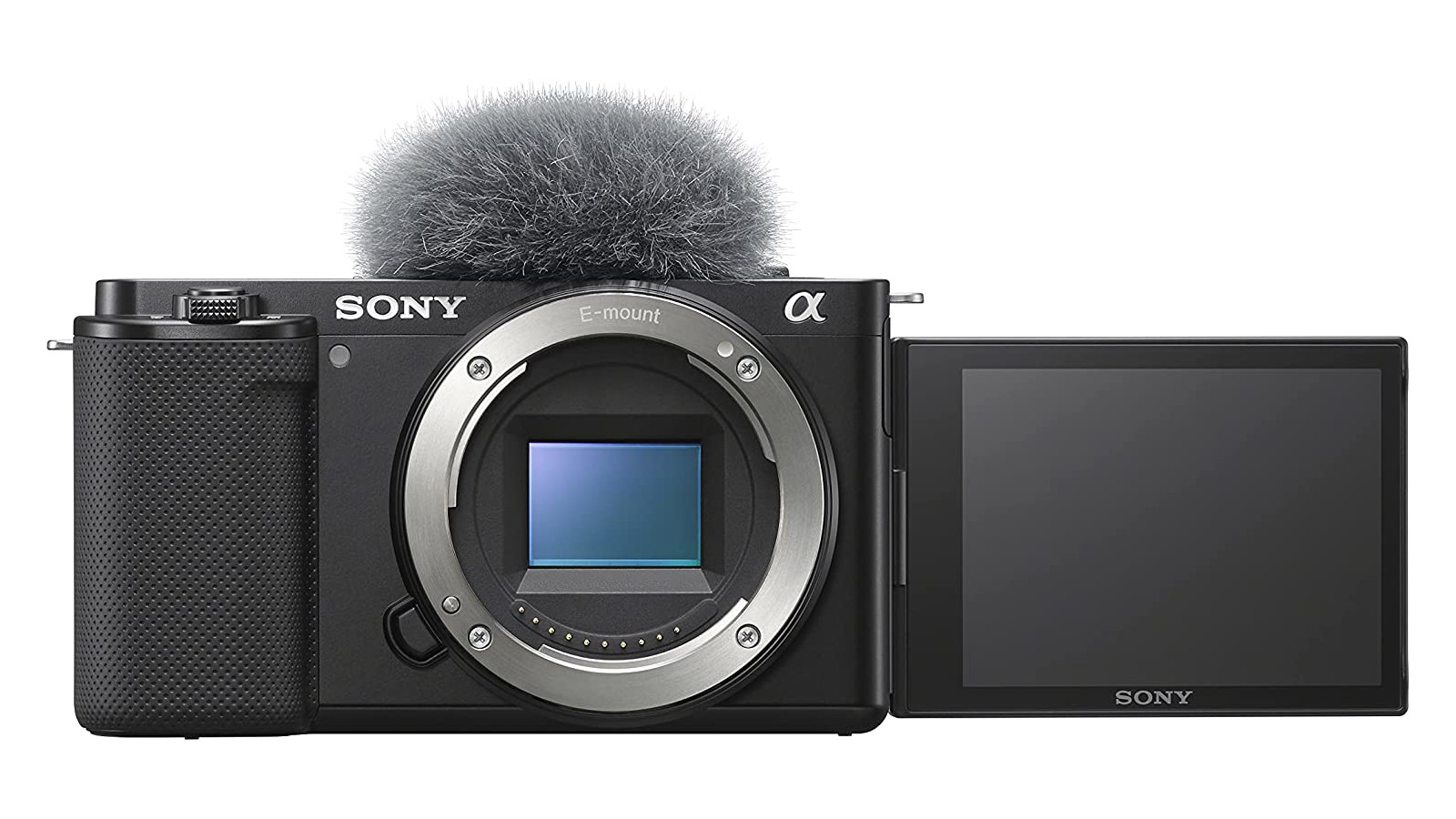
While Sony's A6000 cameras are pretty great for video, those whose interests lie more firmly in this field may want to look at the ZV serial instead. The Sony ZV-E10 is the second photographic camera in this series, and is a superb niggling vlogging photographic camera that can also shoot pretty skilful stills when information technology needs to. It's also really well-priced, more affordable than many rivals.
When using the ZV-E10, you can feel right away that this is a photographic camera designed for video kickoff, non photography. There's no viewfinder and no fashion dial on the rear for quickly shifting modes – something done more in stills than video. That's not to say it's useless for stills - a smartphone is non ergonomically designed for photography, and most of us manage just fine. But if you're focusing mostly on stills, all-time wait elsewhere.
The video, of class, is great. The 4K 30p footage looks well-baked and punchy, and Sony's video autofocus is absolutely grade-leading. The built-in microphone is also good plenty to be useable – something of a rarity on cameras like this – and it comes with a handy clip-on wind muffler that really does brand a departure. The lack of stabilisation is a shame; maybe it would accept made the camera too expensive, but it would have been welcome all the same.
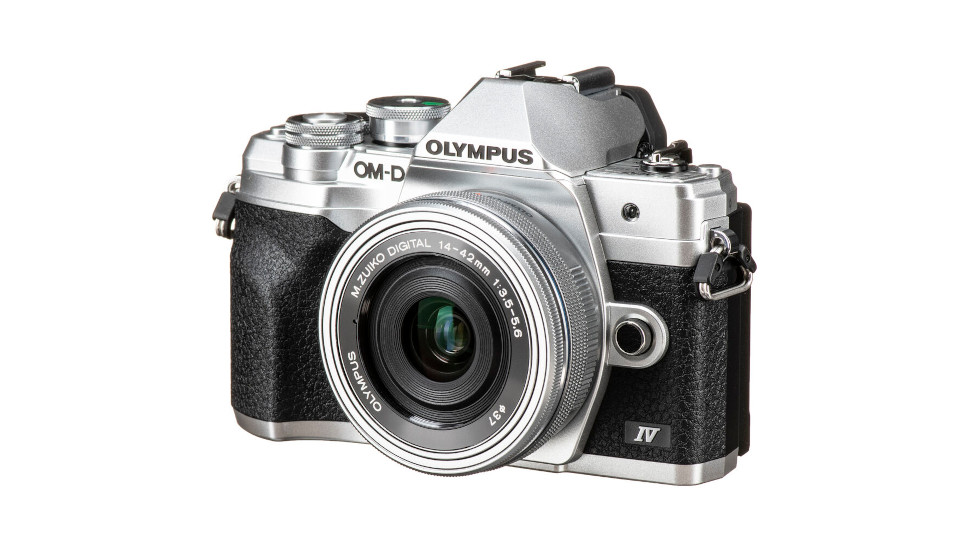
Olympus is now on the fourth iteration of its hugely popular line of travel-friendly mirrorless cameras, and the E-M10 Mark IV is a fantastic entry. Information technology makes for a peachy gateway into mirrorless shooting, lightweight enough to take everywhere, just boasting a deceptive number of sophisticated features - a solid entry in this list of the best photographic camera for beginners listing.
In use, the Olympus E-M10 Mark Iv is a delightful niggling camera. It fits easily into a small bag, and is bully for carrying around everywhere for those unanticipated shooting opportunities. Information technology'southward got a generous in-body stabilisation arrangement that makes it easier to shoot handheld in low calorie-free, and enough of assistive shooting modes that help novice users become their head around settings.
The 4K video capabilities and flip-effectually screen also make it decent for vlogging, though the lack of a mic port is a strike confronting it in this area. Some may also exist turned off by the plastic build, equally opposed to the metal alloys of more expensive cameras. If that doesn't bother you, this is a great starting choice for a beginner's travel camera
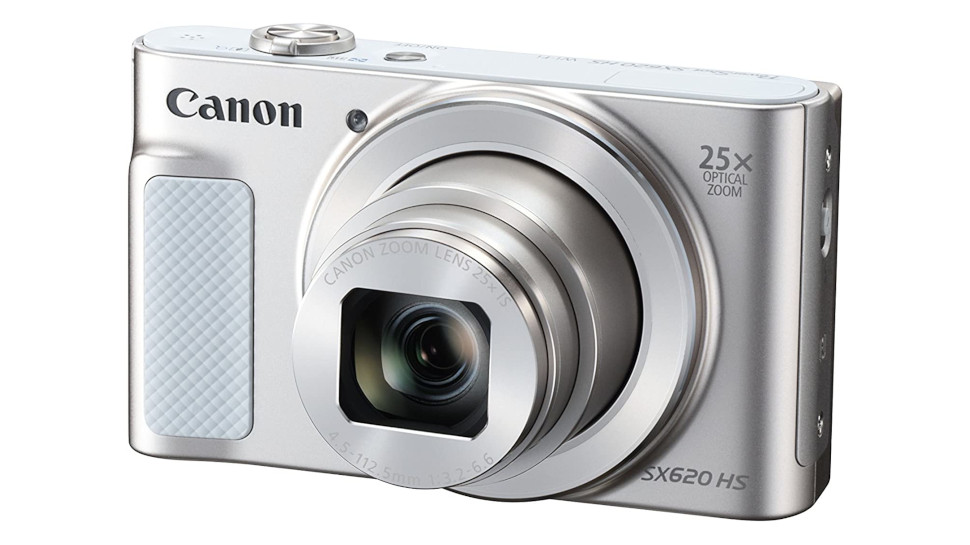
The slim, 182g Catechism PowerShot SX620 HS is even more portable than the Olympus Due east-M10 4 – it's pocketable, and it's also a highly capable travel camera.
We were impressed by the zoom lens on this photographic camera, which covers an equivalent focal range of 25-625mm, and offers pretty decent quality throughout for a camera at this price. Besides, it's more useful at the telephoto end than you might await, thanks to the lens-shift optical stabilisation system. Often long-zoom cameras tin can be basically unusable at the long ends of their lenses unless you mountain them to a tripod – equally every tiny movement of the paw is magnified tenfold by the zoom. And so it's nice to have a system expanding the hand-held utility of the camera.
Those who upgrade to this camera from a smartphone may chafe at the lack of a touchscreen, and information technology's likewise true that the i/2.3inch sensor is basically the same size equally you'll find in a telephone. It'southward worth the upgrade if y'all want a capable travel meaty with a zoom lens that will encompass a broad range of shooting situations, simply don't expect a radical upgrade in image quality.
With the price having come downward since launch, the PowerShot SX620 HS now represents a really sound buy for whatever offset photographer looking to become to grips with real camera controls.
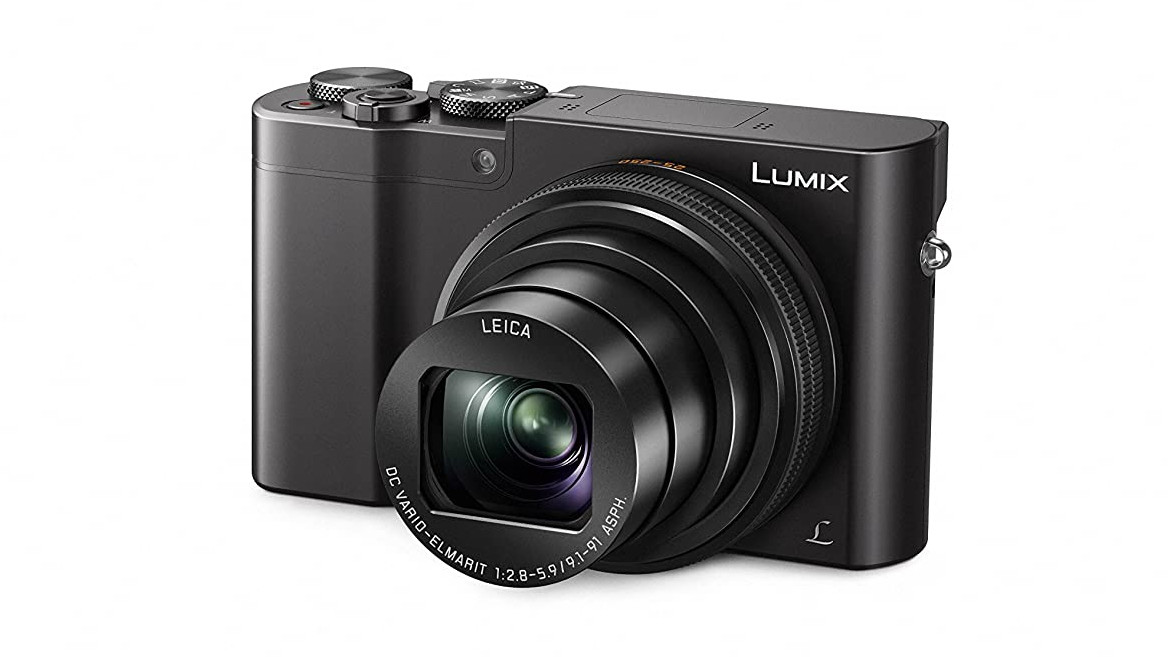
For such a pocket-sized camera, the Panasonic ZS100 (or TZ100 exterior of the United states of america) packs in some seriously big specifications and features. It has a 20.1MP i.0-type sensor that'southward physically large for a photographic camera of this size, and retains relatively noise-free image quality even at high ISO settings. It also crams in an electronic viewfinder and a loftier-res, 3.0inch rear screen, plus a 10x zoom lens with an effective range of 25-250mm.
To proceed things steady, in that location's optical image stabilisation for stills and v-axis hybrid stabilisation for video capture. You tin can likewise shoot at 4k UHD for both stills and video, with a frame rate of upward to 30fps. For full-resolution stills, the burst rate is nevertheless speedy at 10fps.
When reviewing the ZS100, we appreciated all the clever tricks and features that Panasonic put into this highly capable compact. One of the coolest is 'post-focus', which enables yous to capture a burst of stills with automatically transitioning focus distances, and select the frame with the ideal focus point afterwards.
The best camera for beginners: what to consider
Why buy a camera for beginners when you've got a perfectly decent camera in your pocket? While information technology may seem easier to stick with the smartphone, cameras do have many advantages of their own that the physical limitations of smartphones mean they tin can't compete with.
Sensor size
The primary one is sensor size. The concrete size and shape of a camera means information technology's able to field a much larger sensor than a smartphone. The principal thing to remember is that a larger sensor can take larger pixels, which means cleaner images with less noise, specially in depression light. Images taken with a larger sensor have much more than dynamic range (tonal difference between areas of calorie-free and nighttime).
These are the sensor sizes you'll likely encounter when shopping for a camera, from smallest to largest:
1/2.3-inch type, 1/2.5-inch type 1/1.vii-inch type:
This is the crude sensor size mostly found in smartphones and cheaper compact cameras. It makes for affordable cameras, but the trade-off is poor depression calorie-free performance.
1-inch blazon:
These sensors are oftentimes constitute in compact cameras and bridge cameras. Offering a footstep up from smartphone sensors, a 1-inch sensor will produce less noise in images.
Micro Four Thirds:
A sensor size standard for mirrorless cameras, Micro Four Thirds sensors are plant in Olympus and Panasonic models. Larger than i-inch type, Micro Four Thirds cameras tend to exist nicely compact while however offering impressive epitome quality.
APS-C
This is the sensor size that bridges the gap between enthusiast and professional. Some photographic camera manufacturers like Fujifilm have based entire systems on APS-C sensors.
Total-frame
And then-named because information technology is roughly the size of a frame of 35mm film, full-frame is more often than not the standard for professional person photographers.
Medium format
A larger sensor size that roughly equates to that of 120 picture, medium format cameras are very expensive (you won't get i for less than a four-figure cost) and tend to be used by specialist shooters.
Lens options
The camera's other main advantage is lens quality. Cameras tin can brand use of optical zoom lenses, assuasive y'all to get closer to your subject field with no loss in quality, and can also use high-quality prime (stock-still focal-length) lenses designed to produce as sharp an paradigm equally possible. Whether you're going for maximum shooting versatility or maximum image quality, a camera can outstrip a smartphone on both fronts.
The listing of advantages goes on. Cameras have more sophisticated autofocus systems, capable of tracking moving subjects, and can burst shoot at high speeds to ensure you never miss the moment. Higher megapixel counts as well mean that images can be printed at higher quality.
What are the unlike types of camera?
There are a few main types of camera that we've included in this guide, as each one tin can be well-suited for beginners. Hither'due south a quick rundown of the key types and the differences between them,
DSLRs: Once the professional person standard for digital cameras, the DSLR is notwithstanding amongst the most popular type of camera around. The name stands for "digital single-lens reflex", which refers to the fact that information technology uses a unmarried lens for shooting and focusing (erstwhile rangefinder-style cameras used two). DSLRs have an internal mirror machinery that allows them to field an optical viewfinder, which many photographers still prefer to an LCD screen for composing images. They also tend to be hardier and more than weatherproof than other types of photographic camera, though this varies from model to model.
Mirrorless: Mirrorless cameras, like DSLRs, have a lens mount that allows lenses to exist swapped at volition. Nevertheless, they forgo the mirror mechanism that allows for an optical viewfinder, the trade-off being that this allows them to exist built smaller and lighter. Mirrorless cameras are very much seen as the future in the photograph and video community, and this is generally where the almost exciting developments in imaging technology are taking place.
Compact: Compact cameras accept a fixed lens on their front that cannot be changed; this may be a zoom lens that allows for covering a ready focal range, or a fixed-focal-length "prime" lens with an emphasis on quality. Meaty cameras, also known as point-and-shoot cameras, were once thought of every bit cheap and poor-quality, only at present have been forced to up their game to compete with smartphones. These days, amny compacts offer imaging quality to rival that of interchangeable lens cameras.
Instant film: Like the Polaroids of yesteryear, instant film cameras are capable of producing a physical print of an image moments later capture! While they'll never win awards for technical perfection, these cameras provide a kind of knockabout fun that makes them great for beginners – and these days they tin connect wirelessly to smart devices to open upward new shooting possibilities.
But which is the best camera for beginners to pick? Information technology depends on what you demand. Do you want something small and portable or hardy and weatherproof? Are you lot likely to exist shooting video too as stills? Do you see yourself ownership more lenses, or would you adopt a single packet that does information technology all? The answers to all these questions volition touch which camera is all-time for you.
Read more than:
- Best camera phones: Peak options for y'all right at present
- Best meaty cameras: Cull the perfect small camera for you
- The best photographic camera for wildlife photography
Related articles
Source: https://www.creativebloq.com/buying-guides/best-cameras-for-beginners
Posted by: mooretaks1965.blogspot.com

0 Response to "What Camera Is The Best For Beginners?"
Post a Comment